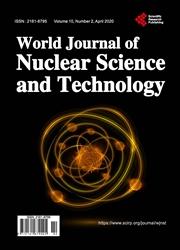Isobars Separation (137Cs-137mBa-137Ba) from Marine Sediments, in Order to Evaluate Directly Their Radioactive Contamination by Mass Spectrometry
引用次数: 0
Abstract
Marine sediments contamination by fission product 137Cs-137mBa is a fact since the period 1945-65, when plus than two thousand atomic explosion tests were performed mainly in the southern seas, earth region with minor population density. However, marine flows have produced dissemination of this radioactive pair through the sea bottom all over the world, at different levels, because the sea movement and natural decaying of radioactive pair: parent 137Cs (t1/2 = 30.17 years) and daughter 137mBa (t1/2 = 2.55 minutes). Radioactive detection of these contaminants, compared as percentage with that of natural 40K (t1/2 = 1.28 × 109 years, 0.0118% of elementary K) leads to radiation contamination factor (RCF), as one possible unit to measure the radioactive contamination intensity in different regions, as well to determine if there is some other possible source of this contaminant, for example water cooling from power nuclear reactors when it is discharged at sea. However, radioactive detection always implies an unavoidable statistical variation, which makes more difficult to appreciate the changes as function of time and region. But at beginning of this century, mass spectrometry has got impressive advances, which makes it much more precise and sensible than radioactive detection [1]. This paper attempts to measure with other units the radioactive contamination: 137Cs atoms number per gram of sample, instead radioactivity, which could be more direct and with minor standard deviation that radioactive detection, solving at same time the isobars separation: 137Cs versus 137mBa plus elementary 137Ba (11.23% of Ba element).从海洋沉积物中分离等压线(137Cs-137mBa-137Ba),用质谱法直接评价其放射性污染
自1945- 1965年以来,核裂变产物137Cs-137mBa污染海洋沉积物是一个事实,当时主要在人口密度较小的南部海域进行了两千多次核爆炸试验。然而,由于海洋运动和放射性对的自然衰变,海洋流动使该放射性对在世界各地的海底以不同的水平传播:母放射性对137Cs (t1/2 = 30.17年)和子放射性对137mBa (t1/2 = 2.55分钟)。这些污染物的放射性检测,与天然40K (t1/2 = 1.28 × 109年,0.0118%的基本K)的百分比进行比较,导致辐射污染系数(RCF),作为一个可能的单位来衡量不同地区的放射性污染强度,以及确定是否有其他可能的污染源,例如,当它从海上排放的动力核反应堆的水冷却。然而,放射性检测总是意味着不可避免的统计变化,这使得更难以理解作为时间和区域的函数的变化。但在本世纪初,质谱法取得了令人印象深刻的进步,这使得它比放射性检测更加精确和敏感。本文试图用其他单位测量放射性污染:每克样品的137Cs原子数,而不是放射性,这比放射性检测更直接,标准差更小,同时解决了等压线分离:137Cs与137mBa加初等元素137Ba (Ba元素的11.23%)。
本文章由计算机程序翻译,如有差异,请以英文原文为准。
求助全文
约1分钟内获得全文
求助全文

 求助内容:
求助内容: 应助结果提醒方式:
应助结果提醒方式:


